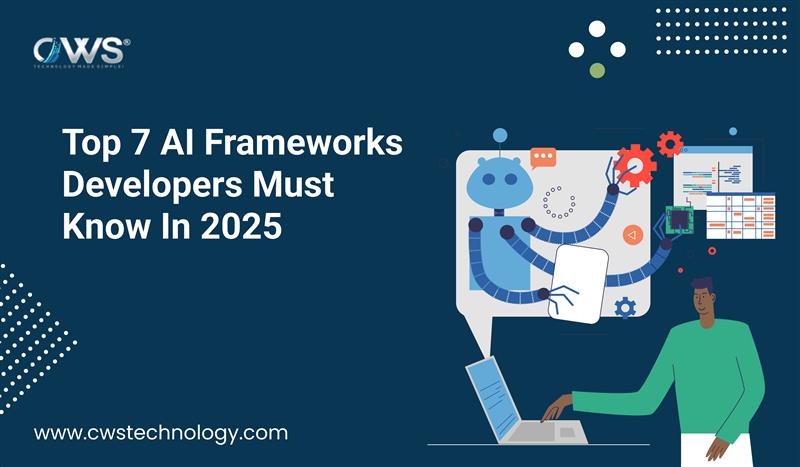The evolution of JavaScript frameworks in 2025 marks one of the most transformative phases in modern web development. With the growing complexity of applications, increasing performance demands, and the rise of AI-assisted coding, JavaScript frameworks have evolved far beyond their original purposes. Developers today face a fast-changing landscape where innovation, speed, and developer experience determine success.
In this article, we’ll explore how JavaScript frameworks have evolved, the new trends shaping 2025, and what developers and companies should focus on to stay relevant and efficient.
1. From Simplicity to Sophistication: How JavaScript Frameworks Have Evolved
Just a decade ago, web development was simpler. Frameworks like AngularJS, Backbone.js, and jQuery dominated the scene. Their main goal was to simplify DOM manipulation and handle dynamic data updates.
Fast forward to 2025, and frameworks have evolved into full-fledged ecosystems capable of handling everything—from real-time rendering and server-side logic to AI-powered optimization and predictive UI behavior.
Key Phases in the Evolution:
- 2010–2015: The rise of MV* frameworks (AngularJS, Backbone, Ember).
- 2016–2020: The dominance of component-based frameworks (React, Vue.js, Angular 2+).
- 2021–2023: Growth of meta-frameworks (Next.js, Nuxt.js, SvelteKit).
- 2024–2025: The rise of AI-integrated, lightweight, and universal frameworks focusing on developer productivity and performance.
2. 2025: The Era of AI-Driven and Edge Optimised Frameworks
The biggest shift in 2025 is the integration of AI within development frameworks themselves. Tools are becoming intelligent collaborators, not just libraries.
Key Trends Defining This Year:
a. AI-Powered Framework Assistance
Frameworks like React, Angular, and Svelte are increasingly pairing with AI tools (like GitHub Copilot and Cody) that automate repetitive logic, generate optimized components, and even suggest architectural decisions.
Example: React 19 (2025 release) now includes an AI-Assist plugin for dynamic code suggestions and context-aware performance improvements.
b. Edge Rendering Takes Center Stage
The shift from centralised servers to edge computing has reshaped how frameworks handle performance. Frameworks such as Next.js, Qwik, and Astro now focus on serving pre-rendered or partially hydrated pages from the edge—ensuring ultra-fast load times and SEO performance.
c. Built-in Type Safety & Predictive Debugging
Frameworks are no longer optional about TypeScript—they’re built around it. Predictive debugging, AI linting, and automatic type inference are standard in 2025, reducing production errors dramatically.
3. The Frameworks Leading the Charge in 2025
a. React (React 19 and Beyond)
Still a global favorite, React continues to evolve by focusing on React Server Components (RSC), AI-assisted refactoring, and streamlined data-fetching models.
Why It Stays Relevant:
- Huge ecosystem and community support.
- Excellent backward compatibility.
- Integrations with Next.js for full-stack rendering.
b. Next.js 15: The Full-Stack Frontend Revolution
Next.js has become the default choice for production-grade apps. In 2025, it’s more of a meta-framework offering end-to-end solutions—from database management to static generation to AI-based performance tuning.
Key Features:
- Edge rendering out of the box.
- Server Actions for simpler APIs.
- AI caching and predictive routing for real-time performance boosts.
c. Svelte and SvelteKit: The Lightweight Powerhouse
Svelte continues to attract developers who crave speed and simplicity. SvelteKit 3 (2025 release) focuses on zero-runtime builds and predictive compilation, resulting in unmatched performance for large-scale apps.
Why Developers Love It:
- No virtual DOM.
- Smaller bundle sizes.
- Great developer experience.
d. Qwik and Astro: The New Generation of Performance-Centric Frameworks
Both Qwik and Astro champion the “less JavaScript is better” philosophy. They prioritize resumability, hydration efficiency, and island architecture, making them the go-to for performance-critical applications.
Example: Astro 4 (2025) integrates AI-driven image optimization and build-time content analysis, reducing bundle size by up to 40%.
4. Key Developer Priorities in 2025
The evolution of JavaScript frameworks has shifted what developers prioritize in their daily workflows.
a. Developer Experience (DX)
Developers now expect:
- AI coding companions.
- Visual debugging tools.
- Faster hot reloads and automated testing.
b. Performance as a Core Value
Performance is no longer an afterthought—it’s a default requirement. Frameworks are now optimized for lazy loading, code splitting, and edge deployment.
c. Security and Compliance Built-In
2025 frameworks ship with built-in security features like automatic XSS sanitization, role-based access control, and compliance presets for GDPR and CCPA.
5. Challenges Developers Still Face in 2025
Despite the rapid evolution, some challenges remain:
- Framework Overload: Too many options create confusion and fragmentation.
- Backward Compatibility: Older codebases struggle to keep up with newer framework versions.
- Learning Curve: Rapid updates mean continuous re-skilling.
- Tooling Dependencies: AI and build tools require more computing power and cost.
6. The Future of JavaScript Frameworks Beyond 2025
Looking ahead, JavaScript frameworks are heading toward autonomous development environments—where codebases evolve themselves based on analytics and user feedback.
We can expect:
- Self-healing codebases using AI monitoring.
- Cross-language interoperability, blending JS with Rust or WebAssembly.
- Declarative AI components integrated into frontend logic.
The future isn’t about choosing one framework—it’s about using the right combination of frameworks and AI tools to build smarter, faster, and more reliable apps.
Conclusion
The evolution of JavaScript frameworks in 2025 is not just about better syntax or faster rendering—it’s about intelligence, adaptability, and performance at scale. As the ecosystem grows, developers must prioritize learning frameworks that balance productivity with long-term maintainability.
Key takeaway: Stay curious, embrace AI integration, and focus on frameworks that align with your project’s scalability and performance goals.







